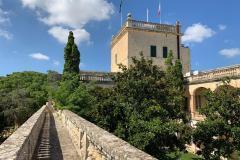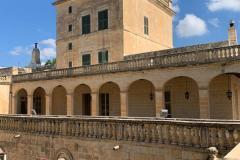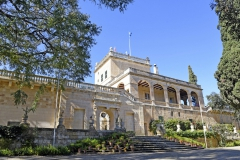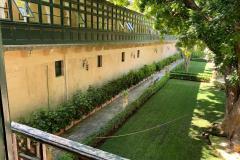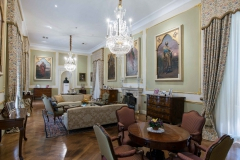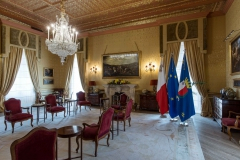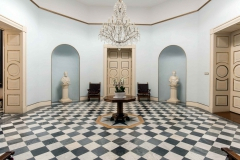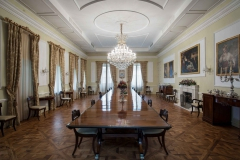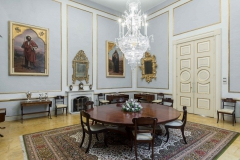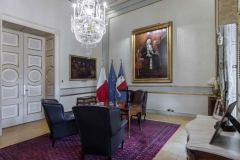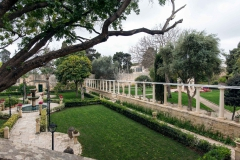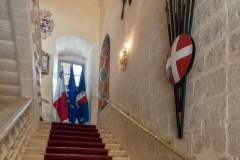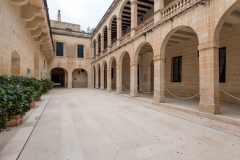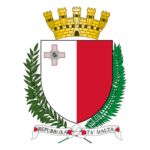From country retreat to official residence
Sant’Anton Palace is the official residence of the President of the Republic of Malta. The earliest known building dates to the early seventeenth century, built as a country villa by the then Knight of Malta and future Grand Master Antoine de Paule (1623-1636). De Paule’s choice of site approximately at the centre of the island in the village of Attard, with Balzan and Lija close by, also includes other country residences and hunting lodges, including extensive gardens, built over time by successive members of the Order of St John. On his election to the Magistracy in 1623, De Paule enlarged and extended the villa into a fully-fledged palace with surrounding gardens. De Paule’s legacy still holds in the choice of name referring to his patron saint – Anthony of Padova. By the late 1620s, Sant’Anton Palace also became a place of interest for travellers to the islands. De Paule’s villa would have been a thriving household including stables and accommodation for the Grand Master’s retinue. The original building also included a series of interconnected rooms accessed through a main staircase. The linchpin architectural element would have been the square tower that imparts the core of the historic palace with the looks of a fortress. Additional structures, embellishments and improvements were carried out over time by successive Grand Masters, particularly Grand Masters António Manuel de Vilhena (1722-1736) and Emmanuel de Rohan-Polduc (1775-1797). Major architectural interventions were carried out well into the British period. This includes the arched open-air loggias serving the purpose of covered connecting walkways and what was later to be known as the Russian chapel built to the design of General Sir George Whitmore (1775-1862) in the Neoclassical style. Gardens with rich vegetation surround Sant’Anton Palace on all sides of which one, currently within the remit of the apposite central Government department, has been open to the public since 1885. The gardens feature water fountains and exedrae strategically located at the intersection of geometrically planned walkways. Orange and citrus groves are prominent, and it was the custom for this produce to be given as gifts to visiting dignitaries and personalities. Sant’Anton Palace is witness to a chequered and continuous history beyond the times of the Order of St John. During the Maltese uprising against the French in 1798, the Palace was the headquarters of the Maltese National Assembly and later became the residence of the first British Civil Commissioner, Admiral Sir Alexander Ball (1757-1809) and continued to serve as residence to successive British Governors. During the British period, Sant’Anton Palace also hosted prominent personalities including Queen Victoria’s son, Prince Alfred, Duke of Saxe-Coburg and Gotha (1844-1900), whose daughter, also born at Sant’Anton Palace, was christened Victoria Melita. Sant’Anton Palace has also welcomed various Britishmonarchs over time including Queen Elisabeth II who stayed at Sant’Anton Palace in what became known as the Queen’s private apartments situated in one of the wings of the Palace. Very many other dignitaries were hosted at Sant’Anton over time. These include visiting heads of state and special guests from all over the world. Sant’Anton Palace was designated as the official residence of the President of Malta when Malta became a Republic in December 1974.